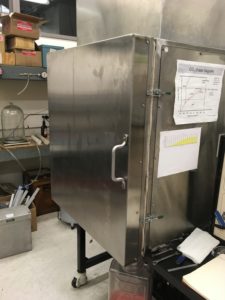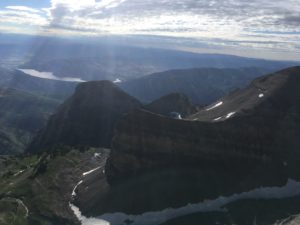The second week of my internship was a blast. Our Arduino shields and Xbee communication devices were delivered. We also got 5 digital temperature sensors in. This week we have been setting up our temperature sensor network and making sure everything is functioning properly. This includes calibrating the sensors in ice water to make sure they are reading the right temperature and setting up the wireless network. Trevor, a post-doctorate researcher in the CO2 group, has been helping Lexie and me with the Arduino code and setting up the wireless network. After relentless troubleshooting, he finally helped us connect the Xbee communication devices together on Friday. We are planning on deploying our wireless sensor network next week. After we prove the communication network can work and collect data to our standards we could possibly receive CO2 sensors. These sensors could help our work tie in with the work of another member of the CO2 group, Aaron, who is measuring the carbon coming out vents on the roof of the Student Union.
We have also been doing rock experiments with Eric, another member of the CO2 group. In one experiment we put rocks on a wet sponge. Capillary action of water allowed the water to climb the rock and we measured the weight of rock as it imbibed more water. We compared different rocks and some were able to imbibe much more water than others.
For the other piece of the experiment, we placed the rocks in a cup of water within a vacuum. When the vacuum was released all the air in the rocks was replaced with water.
We then compared this new weight of the rock with the initial, dry weight which allows us to calculate the porosity of the rock. Porosity is a measure of the void space of the rock relative to the rock’s total volume. Another rock experiment we did was putting a rock under stress in Eric’s lab. As the rock was put under a load we could see how it changed the dimensions of the rock.
Rock experiments help the CO2 group understand how fluids move through different rocks, and how rocks behave under pressure.
Outside of work I have been taking trips to department stores to further furnish my dorm, and I have continued to explore the trails of the Salt Lake area. This Saturday I climbed Mount Timpanogos.
I am very grateful to the Pinhead Institute and the CO2 group for giving me this amazing experience.





There are no comments published yet.